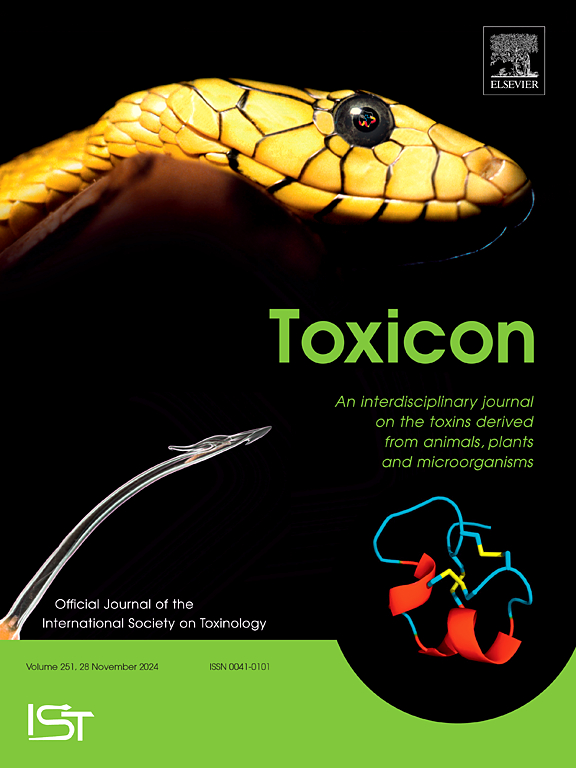Effective production of snake antivenom by targeting epidermal dendritic cells via the ‘low dose, low volume, multi-site’ immunization
IF 2.6
4区 医学
Q2 PHARMACOLOGY & PHARMACY
引用次数: 0
Abstract
Snakebite envenomation (SBE) is a serious neglected tropical disease that affects about 3 million people every year and causes over 100,000 deaths annually, mostly in developing countries. WHO has pledged to cut in half the morbidity and mortality due to SBE by 2030. Animal plasma-derived antivenoms, produced mostly in horses and sheep, are the main treatment modality. However, for over a century, equine plasma antivenom production has faced many problems. These include: low neutralizing potency, failure of horses to develop a satisfactory immune response, and a long immunization period. These problems have led to antivenom shortages and higher costs resulting in otherwise avoidable morbidity and mortality in snake bite victims. Attempts have been made to improve the antivenom production process. For example, a number of adjuvants designed to improve the immune response have been tested. In 1997, an immunization protocol involving the use of multi-site, low-volume and venom doses was developed and is currently used in antivenom production. This protocol constituted a significant innovation that has resulted in highly potent antivenoms within much shortened immunization periods, with all the immunized horses responding and with much less venom immunogen used. It has resulted in an ample antivenom supply for use in Thailand and neighboring countries and has led to no reported deaths from snakebite in Thailand in the past few years. The effectiveness of this immunization protocol was the result of a strategy based on targeting dendritic cells which play a pivotal role in the immune response process. This communication summarizes the basis and results of this immunization strategy.
通过 "低剂量、小体积、多部位 "免疫,以表皮树突状细胞为目标,有效生产蛇毒抗蛇毒血清
蛇咬伤(SBE)是一种严重的被忽视的热带疾病,每年约有 300 万人受到影响,每年造成 10 多万人死亡,其中大部分发生在发展中国家。世卫组织承诺到 2030 年将 SBE 的发病率和死亡率减半。动物血浆衍生抗蛇毒血清主要由马和羊生产,是主要的治疗方式。然而,一个多世纪以来,马血浆抗蛇毒血清的生产面临着许多问题。这些问题包括:中和效力低、马匹无法产生令人满意的免疫反应以及免疫期长。这些问题导致抗蛇毒血清短缺和成本上升,造成蛇咬伤患者本可避免的发病率和死亡率。人们一直在尝试改进抗蛇毒血清的生产工艺。例如,对一些旨在改善免疫反应的佐剂进行了测试。1997 年,制定了一项涉及使用多部位、低剂量和毒液剂量的免疫方案,目前正用于抗蛇毒血清的生产。该方案是一项重大创新,在大大缩短免疫期的情况下生产出了强效抗蛇毒血清,所有接受免疫的马匹都做出了反应,而且使用的毒液免疫原大大减少。该方案为泰国和周边国家提供了充足的抗蛇毒血清,在过去几年中,泰国没有发生过因被蛇咬伤而死亡的报告。这种免疫方案之所以有效,是因为采取了一种以树突状细胞为目标的策略,树突状细胞在免疫反应过程中发挥着关键作用。这篇通讯总结了这一免疫策略的基础和结果。
本文章由计算机程序翻译,如有差异,请以英文原文为准。
求助全文
约1分钟内获得全文
求助全文
来源期刊

Toxicon
医学-毒理学
CiteScore
4.80
自引率
10.70%
发文量
358
审稿时长
68 days
期刊介绍:
Toxicon has an open access mirror Toxicon: X, sharing the same aims and scope, editorial team, submission system and rigorous peer review. An introductory offer Toxicon: X - full waiver of the Open Access fee.
Toxicon''s "aims and scope" are to publish:
-articles containing the results of original research on problems related to toxins derived from animals, plants and microorganisms
-papers on novel findings related to the chemical, pharmacological, toxicological, and immunological properties of natural toxins
-molecular biological studies of toxins and other genes from poisonous and venomous organisms that advance understanding of the role or function of toxins
-clinical observations on poisoning and envenoming where a new therapeutic principle has been proposed or a decidedly superior clinical result has been obtained.
-material on the use of toxins as tools in studying biological processes and material on subjects related to venom and antivenom problems.
-articles on the translational application of toxins, for example as drugs and insecticides
-epidemiological studies on envenoming or poisoning, so long as they highlight a previously unrecognised medical problem or provide insight into the prevention or medical treatment of envenoming or poisoning. Retrospective surveys of hospital records, especially those lacking species identification, will not be considered for publication. Properly designed prospective community-based surveys are strongly encouraged.
-articles describing well-known activities of venoms, such as antibacterial, anticancer, and analgesic activities of arachnid venoms, without any attempt to define the mechanism of action or purify the active component, will not be considered for publication in Toxicon.
-review articles on problems related to toxinology.
To encourage the exchange of ideas, sections of the journal may be devoted to Short Communications, Letters to the Editor and activities of the affiliated societies.
 求助内容:
求助内容: 应助结果提醒方式:
应助结果提醒方式:


